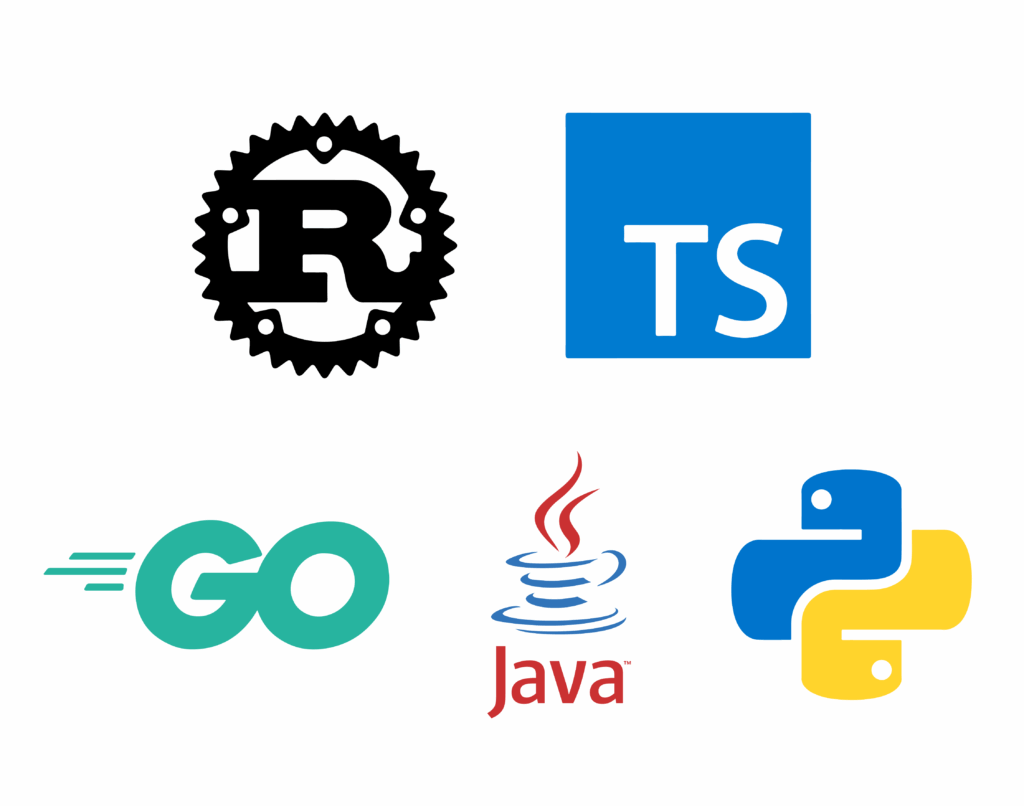Are you interested in AI and wondering which programming language to learn? You are in a situation where the first thing you need to do is to choose a framework for this quest and not the language.
Usually, the choice between Google (TensorFlow) and Meta (PyTorch) in this area of AI frameworks will satisfy most developers out there. Both support most of the programming languages commonly used in IT.
This article explores five powerful languages: Rust, TypeScript, Golang, Java, and Python. You’ll discover each language’s unique strengths for AI implementation, along with specific recommendations for both individual developers and companies looking to integrate artificial intelligence.
Whether you’re already familiar with programming or just starting your AI journey, this guide will help you make an informed decision about which language best suits your specific AI goals and existing technical background.

Mozilla, Microsoft, Amazon Web Services (AWS), Google, Facebook (Meta), Apple, Dropbox, Cloudflare, Discord, Twitter/X. The list of Rust companies is quite impressive!
AI assistants have accelerated the learning of Rust. It is a low-level language, after all, and this AI assistant change will trigger faster Rust adoption.
The next big thing is finally here and living its corporate life, far away from blockchain, contracts, and gossip. A serious language for serious programming.
TensorFlow likes Rust, so dive into a great framework, TensorFlow with Rust as the most promising enterprise IT language. Macros in Rust generate code based on input, simplifying repetitive patterns and making code more concise.
Rust macros simply allow us to write code that writes more code, also known as meta-programming. Macros are used extensively in Rust. Enough from me, check out what Linus Torvalds has to say about Rust and Linux.
A superset of JavaScript, TypeScript provides strong static typing. This feature is particularly useful in AI development, where large data sets and complex algorithms are often used.
It’s widely used in front-end development around the world, and is gaining traction for full-stack development thanks to Node.js. It was developed by Microsoft and released in 2012.
Go is a high-level, statically typed, compiled programming language developed at Google in 2009. It is widely used in enterprise IT ecosystems.
Go’s speed and performance are well suited to the CPU-intensive, highly compute-intensive computations required by AI solutions. It is faster than Python, easier to use than other machine learning platforms, and offers several machine learning libraries.
The undisputed ruler of the programming world by the number of applications written in it. With compatibility with TensorFlow and hosting libraries such as the Deep Java Library, Kubeflow and OpenNLP, Java is well-equipped for AI tasks.
Its simplified debugging, user-friendly syntax and support for object-oriented patterns make it a versatile choice for AI developers. The year is 2025, for the record!
Despite predating the AI boom, Python is one of the most popular languages for AI development. Known as the primary language for machine learning, Python owes its popularity to its origins as a robust data analytics tool, well-established in the realm of big data.
In particular, Python’s dominance in AI is reinforced by dedicated frameworks such as TensorFlow, scikit-learn, PyTorch, Keras and Theano.
These are explicitly designed for machine learning and deep neural network tasks. Their simplicity adds to their appeal, making them an ideal choice for developers new to AI.
The five languages we’ve explored each bring unique advantages to AI development. Your choice should align with your project requirements, team expertise, and business goals. Start with what you know, then expand strategically.
By matching your language choice to your objectives, you’ll position yourself or your organization for successful AI implementation that delivers real results.